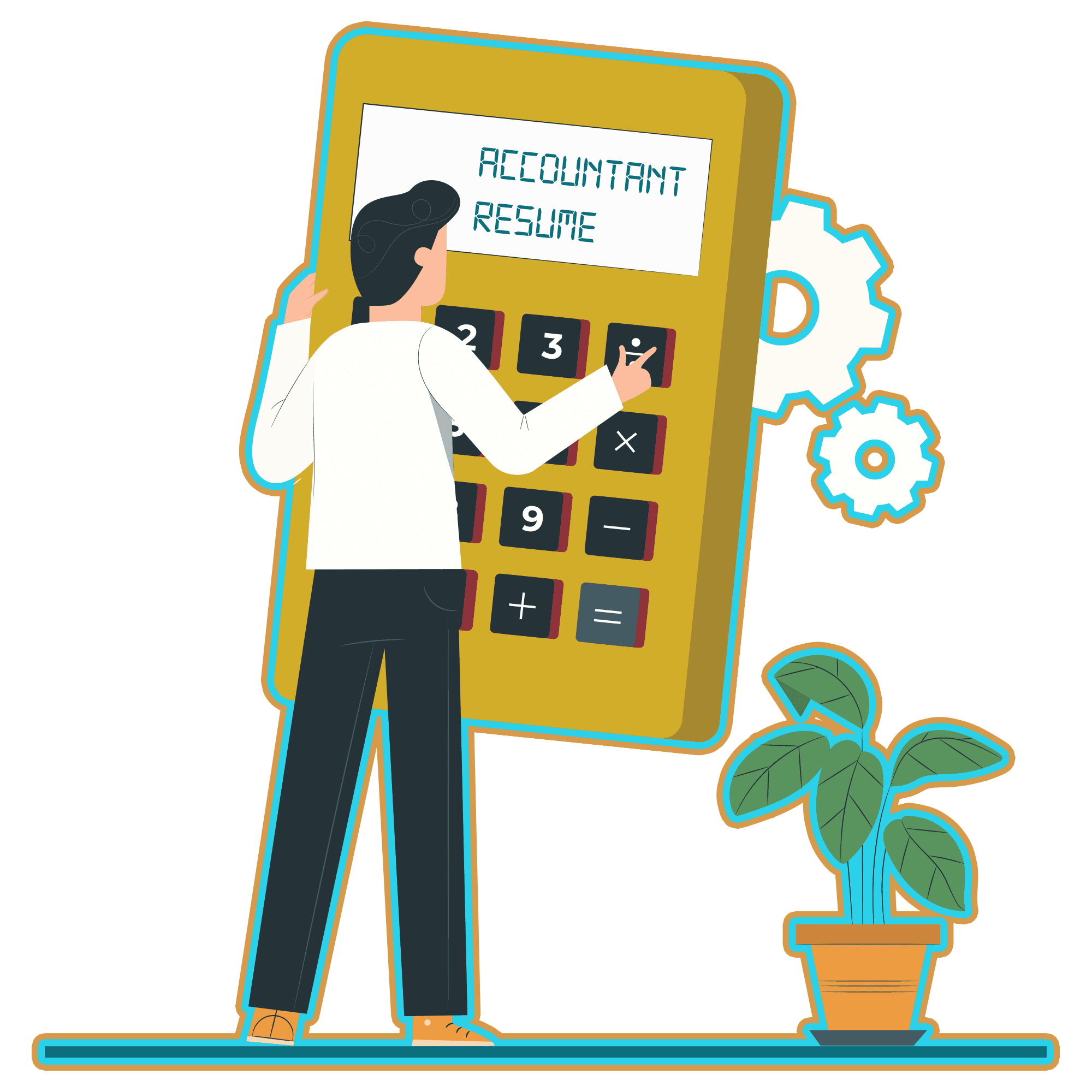Evaluation and communication of language abilities must incorporate levels of language proficiency. These standard proficiency levels, such as novice, intermediate, advanced, and fluent, provide a framework for gauging language proficiency. Systems such as the Common European Framework of Reference for Languages (CEFR) and the Interagency Language Roundtable (ILR) define specific descriptors and criteria for each level, which cover a wide range of language skills. Individuals are assigned to the appropriate proficiency level through proficiency tests, self-assessment questionnaires, or evaluations conducted by specialists.
Should you put languages on a resume?
You should put languages on a resume. Indicating the languages you speak and the level of proficiency is helpful information for prospective employers. In a world that is becoming increasingly globalized, the ability to speak multiple languages will distinguish you from other candidates. Possessing the ability to communicate in multiple languages demonstrates adaptability and cultural sensitivity and paves the way for opportunities to work with clients and coworkers from diverse backgrounds. It demonstrates a commitment to self-improvement and learning, as acquiring language skills takes time and effort. In addition, if the job you are applying for requires fluency in a particular language, highlighting proficiency on a resume gives you an advantage and increases the possibility of being considered for the role. Ultimately, including languages on a resume enhances the overall profile and increases job prospects in the interconnected job market of today.
How to list languages on resume
To list languages on a resume, follow these simple guidelines to demonstrate language ability effectively.
- Determine language proficiency levels. Begin by assessing proficiency in each language you want to include. There are three common levels: native, advanced, and intermediate. The term "native" or "bilingual" refers to someone fluent in both languages, typically acquired from birth or through extensive exposure to them. The advanced level of proficiency includes speaking, writing, and understanding the language easily. A person with an intermediate level is comfortable in day-to-day conversations but has some limitations in complex situations. Basic proficiency means possessing rudimentary knowledge and understanding of the language.
- Create a dedicated "Languages" section. Add a separate section on a resume titled "Languages" or "Language Proficiency." It allows employers to identify language abilities quickly and saves them from searching through other sections.
- List languages in order of proficiency. Begin by listing the language you are most proficient in, followed by the others in descending order. For example:
Languages
English: Native
Spanish: Advanced
French: Intermediate
German: Basic -
Specify language proficiency level. To provide clarity, specify the proficiency level for each language.
- Native or bilingual
- Advanced
- Intermediate
- Basic
- Or use the Common European Framework of Reference for Languages (CEFR) levels (A1, A2, B1, B2, C1, C2).
- Highlight relevant certifications or experiences. Include them in this section if you have obtained any language certifications, such as TOEFL, DELF, or DELE, or relevant immersion or study abroad experiences. Mentioning the credentials demonstrates the commitment to language learning and adds credibility to language proficiency claims.
- Provide context or examples. Consider providing brief examples or context to showcase how you have applied language abilities in real-life scenarios if language skills have been utilized in previous jobs, projects, or volunteer work. It helps employers understand the practical relevance of language skills.
Where to put languages on a resume?
Languages must be included in a resume's "Skills" or "Language Proficiency" section, typically at the top of the document.
Including language skills on a resume is essential, especially if the position you're applying for requires communication or translation abilities. Here is how you effectively demonstrate language skills.
- Skills Section: Create a dedicated section titled "Skills" or "Language Proficiency" and list the languages you speak fluently or at an intermediate level. For example:
- Skills: English (Native), Spanish (Fluent), French (Intermediate)
- Language Proficiency Levels: To give employers a clear understanding of language skills, consider adding proficiency levels next to each language. Use terms like "native," "fluent," "advanced," "intermediate," or "basic." If unsure about your proficiency level, use a standardized language proficiency scale such as the Common European Framework of Reference for Languages (CEFR).
- Relevance to the Position: Emphasize language skills in a prominent place on the resume if the job description specifically mentions the need for bilingual or multilingual candidates. For instance, if you're applying for a customer service role that requires fluency in English and Spanish, ensure that these languages are highlighted.
- Certifications or Tests: If you have obtained any language certifications or taken proficiency tests, such as the TOEFL or DELF, mention them in a separate section. It demonstrates dedication and validates language skills.
- Work Experience: It is essential to highlight specific instances where you have utilized language skills professionally in the work experience section. For example, mention translation work, multilingual customer support, or collaborations with international teams.
- Keywords: Tailor the language skills section to match the keywords used in the job posting. This increases the chances of the resume passing through applicant tracking systems (ATS) and catching the attention of hiring managers.
How to describe language skills on a resume
To describe language skills on a resume, consider following guidelines.
- Common European Framework of Reference for Languages (CEFR): The CEFR is a widely recognized framework for assessing language proficiency. It has six levels: A1, A2, B1, B2, C1, and C2. Each level represents a specific set of language skills and abilities.
- Interagency Language Roundtable (ILR): The U.S. government uses the ILR scale to evaluate language proficiency. It has five levels: 0, 1, 2, 3, and 4. Each level describes different levels of comprehension, speaking, reading, and writing skills.
- American Council on the Teaching of Foreign Languages (ACTFL): The ACTFL scale is commonly used in the United States for language proficiency assessment. It consists of five levels: Novice (Low, Mid, High), Intermediate (Low, Mid, High), Advanced (Low, Mid, High), and Superior.
Comparison of Different Language Scales:
| Language proficiency scale | Description | CEFR Equivalent | ILR Equivalent |
| A1 | Basic understanding of everyday expressions | A1 | 0 |
| A2 | Limited communication in familiar situations | A2 | 1 |
| B1 | Can handle most situations while traveling | B1 | 2 |
| B2 | Comfortable with complex language and discussions | B2 | 3 |
| C1 | Advanced fluency, able to express nuanced ideas | C1 | 3/4 |
| C2 | Native-like proficiency | C2 | 4 |
Identify the language rating system
The language classification system is a method for evaluating and classifying languages based on various criteria. It provides a standard framework for assessing and comparing languages based on their complexity, proficiency levels, learning difficulty, and other linguistic characteristics. Researchers, educators, and language enthusiasts better comprehend and discuss the characteristics and difficulties associated with learning and using a specific language by identifying the language rating system.
ILR
The Interagency Language Roundtable (ILR) is an organization that focuses on language proficiency and education within the United States government. It was established in 1955 and comprises representatives from various federal agencies, including the Department of State, the Department of Defense, and the intelligence community.
The ILR is crucial in developing and implementing language standards and assessments for federal employees. It has created the ILR Skill Level Descriptions, which provide a common framework for evaluating language proficiency across different languages. These descriptions range from basic to superior levels and cover reading, writing, speaking, and listening skills.
The ILR also promotes language training and education by developing resources, guidelines, and best practices. It encourages collaboration among agencies and facilitates the sharing of language-related expertise and materials. The ILR researches and develops language testing methods to assess and certify language proficiency.
Overall, the Interagency Language Roundtable serves as a central hub for language-related initiatives in the U.S. government, supporting language learning, proficiency assessment, and the effective use of languages in various contexts.
CEFR
The Common European Framework of Reference for Languages (CEFR) describes language proficiency levels.
It provides a standard set of guidelines for assessing and comparing language skills across different languages and cultures.
Six levels, from A1 (beginner) to C2 (advanced), make up the CEFR. The four primary skills of speaking, writing, reading, and listening are divided into each level. The framework outlines what learners should be able to do regarding comprehension, communication, and interaction.
Expanding on the CEFR, it serves as a reference point for language learners, teachers, employers, and institutions, allowing them to gauge language proficiency accurately. The framework helps learners set goals, track progress, and effectively plan their language learning journey.
Additionally, the CEFR promotes transparency and comparability in language education and assessment. It facilitates communication between different educational systems, enables a recognition of qualifications across borders, and assists employers in evaluating language skills for professional purposes.
The CEFR, a widely used framework, offers an easy-to-use system for defining and rating linguistic proficiency. It promotes better comprehension and cooperation in language education by providing a common language for discussing and evaluating language skills.
ACTFL
ACTFL stands for the American Council on the Teaching of Foreign Languages.
It is an organization in the United States dedicated to promoting and improving the teaching and learning of foreign languages.
ACTFL sets standards and guidelines for language educators and learners to enhance language proficiency and cultural understanding. These standards cover various aspects such as communication, cultures, connections, comparisons, and communities.
The organization provides resources, professional development opportunities, and research-based strategies to support language teachers' instructional practices. ACTFL also offers proficiency assessments and certifications to evaluate language learners' abilities in different languages.
By offering standards, professional development, and assessments to support efficient teaching and learning of foreign languages, ACTFL significantly contributes to advancing language education in the United States.
LinkedIn Language Skill Levels
LinkedIn language skill levels are a way to gauge an individual's proficiency in a particular language. They provide a standardized framework for users to showcase their language abilities on their LinkedIn profiles. The skill levels consist of five categories: Elementary, Limited Working, Professional Working, Full Professional, and Native/Bilingual.
- Elementary: At this level, individuals possess basic knowledge and understanding of the language, including simple vocabulary and basic grammar. They engage in basic conversations and understand straightforward texts.
- Limited Working: Individuals at this level have a somewhat functional grasp of the language, allowing them to handle everyday situations and communicate in familiar contexts. They understand and express themselves on familiar topics with some difficulty.
- Professional Working: Individuals at this level use the language proficiently in professional settings. They have a solid command of grammar and vocabulary, enabling them to handle complex tasks and understand professional discussions and written materials.
- Complete Professional: Individuals at this level have advanced language skills comparable to native speakers. They communicate fluently and accurately in both spoken and written forms. They understand nuanced language usage and engage in specialized discussions about their profession.
- Native/Bilingual: Individuals at this level are either native speakers or have acquired a proficiency equivalent to a native speaker. They deeply understand the language, including its cultural nuances, idiomatic expressions, and complex grammar structures.
LinkedIn language skill levels offer a standardized way for users to showcase their proficiency in different languages, ranging from elementary knowledge to native or bilingual fluency.
How do you determine your language proficiency level?
Determining your language proficiency level involves assessing your ability to understand, speak, read, and write in a specific language. Several factors help determine the proficiency level, including vocabulary knowledge, grammar skills, comprehension, fluency, and cultural understanding. Evaluating these aspects allows you to gauge your competency in the language and communicate effectively.
Language proficiency levels are often categorized into scales, such as the Common European Framework of Reference for Languages (CEFR) or the Interagency Language Roundtable (ILR) scale. The scales provide a standardized framework for assessing language proficiency across various languages.
To determine the level of language proficiency, it's essential to consider several key factors. First and foremost, the vocabulary plays a crucial role. Assess the range and depth of words and phrases, reflecting the communication ability. Grammar is another fundamental aspect. Evaluate understanding and ability to apply grammatical rules correctly, as it forms the foundation of clear and coherent communication. Comprehension is equally vital; measures the capacity to understand spoken or written language in various contexts and registers, showcasing adaptability in different communication scenarios. Fluency is a significant indicator to assess your ability to express yourself smoothly and spontaneously, without hesitations or significant errors. The pronunciation matters; consider how accurately and intelligibly you articulate words and sounds, as it impacts speech clarity. Lastly, writing skills must not be overlooked. Evaluate proficiency in producing written texts with appropriate structure, coherence, and vocabulary, reflecting the ability to communicate effectively in a written format.
It's important to remember that language skills vary depending on the task and surrounding circumstances. Self-assessment has limitations, so obtaining outside assessments, such as language proficiency tests or professional evaluations, offers a more accurate indication of the level of language proficiency. It is necessary to evaluate vocabulary, grammar, comprehension, fluency, pronunciation, writing, and cultural awareness to determine language proficiency. Consider utilizing standardized frameworks and external evaluations for a more precise proficiency assessment.
How to add bilingual to resume
Adding bilingual proficiency to a resume is a valuable asset that significantly enhances a professional profile. It demonstrates the candidate's ability to communicate effectively in multiple languages and highlights their adaptability and cultural awareness. It is an easy way to add bilingualism to a resume.
State which languages you are fluent in or proficient in. For example, mention "Bilingual in English and Spanish" or "Fluent in French and Mandarin." Include bilingual proficiency in the skills section of the resume. Create a separate " Languages " subsection or integrate it into a broader section, such as "Skills and Qualifications."
Specify the level of proficiency for each language to provide more clarity. Use terms like "native speaker," "fluent," "advanced," "intermediate," or "basic" to describe the language skills. Mentioning the professional background or using language skills in a professional setting is crucial when describing work experience. Emphasize specific projects or roles where bilingualism was crucial to success. Include language certifications or completed language courses in the resume's education or certifications section. It demonstrates a commitment to language learning and validates proficiency.
Mention any experiences or knowledge reflecting an understanding of the cultures associated with languages. This includes studying abroad, volunteering, or engaging in cultural exchange programs.




